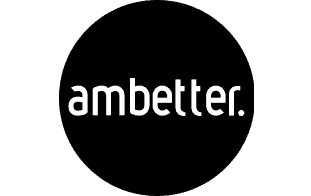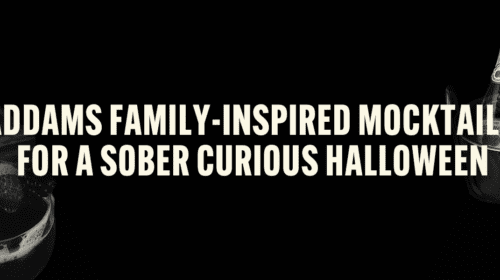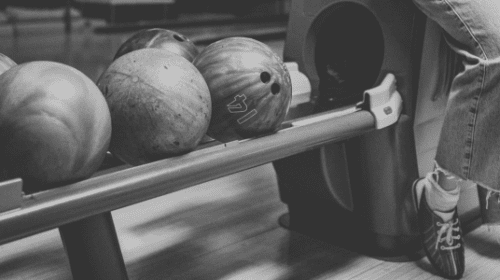At Recovery Unplugged, we always say, “Music is medicine,” and now we’re getting into the “nitty-gritty” of what that means. Check out this article from guest blogger, mental health expert, and Recovery Unplugged Clinical Consultant Hilary Curtis, Ph.D., LMHC, CCATP, CAIMHP, illustrating the physiological and behavioral benefits of music in addiction treatment.
Music therapy, as a formal discipline, has been increasingly used in addiction treatment and recovery in recent decades, leveraging its psychological and physiological benefits. Our brains fully respond to music in personal and transformative ways. Things happen when we like the sounds we hear: our eyes dilate, our pulse changes, and our body releases dopamine. Music is closely connected to our emotions, the regulation of affect, social interactions, and psychological processes. Our culture reflects this by embedding music in educational, religious, patriotic, and ancestral expressions. Music can calm us, create feelings of safety, bring us together with others, and define a sense of self. Music is indeed our medicine. We have a physiological reaction to the music that is involuntary, exhilarating, invigorating, and often enjoyable. For example, we often feel better when we listen to our favorite song or have a strong positive memory attached to a song from childhood. Music even motivates us to work out and adopt other healthy behaviors.
Replacing the High of Drugs and Alcohol with Music in Addiction Treatment
People generally use mind-altering substances because they want to change the way they feel. The use of mind-altering substances can cause relaxation and altered perception, increased heart rate, lower blood pressure, and make the user feel relaxed and happy; however, they can also cause lethargy, anxiety, paranoia, and psychosis. Regular use of mind-altering substances can severely impact how our brains work, damaging our ability to concentrate, learn, and retain information. What may start as an act to self-regulate one’s emotions or mood can escalate into a spiral of out-of-control harmful use that we see when people try to stop using.
Developmental theories of addiction suggest that emotion regulation is an important risk factor for substance use disorders. Stephen W. Porges, Ph.D., proposed the Polyvagal Theory in 1994, which links the evolution of the mammalian autonomic nervous system to social behavior and emphasizes the importance of the physiological state in the expression of behavioral problems and psychiatric disorders. Music connects instantly with our autonomic nervous system and affects our emotional state. Bridging music, the nervous system, and mental health outcomes is more than just playing a song. We can harness the power of music with evidence-based practices if we consider the power of the brain, our deep need to self-regulate our emotions as well as our natural love for music itself.
Addiction is a disorder of the brain’s reward system. When the brain is exposed to an addictive substance or behavior, nerve cells in the area of the brain involved in planning and executing tasks start communicating in ways that link liking something with wanting it and, in turn, driving us to go after it. When substances are used repeatedly, our willpower, which involves the executive planning in the brain, is functionally steamrolled over by primal urges. Instead of willpower, our primal urges are now in the decision-making “driver’s seat” of the brain.
Knowing how music impacts brain function and human behavior allows us to use it to reduce stress, reduce pain, reduce symptoms of depression, learn new skills, improve cognitive and motor skills, enhance spatial-temporal learning, and rebuild neurons in the brain. When our physiological state is balanced and regulated, it can accelerate and enhance learning. We know that recovery from addiction involves our mind and our body. When we have bodily feelings, we generate a personal narrative, and that narrative makes sense to us. For example, we may tell ourselves: “I feel anxious; there must be something going on that makes me anxious; I better get out of here.” In recovery, we change the neurological narrative and build new skills to continue change.
Neurologically informed treatment planning uses a holistic model to understand the brain’s system of emotional regulation with biological, psychological, and social influences. The brain specializes in the processing of life experiences, including trauma. Life experiences are meaningful in regard to the needs embedded within each human being’s brain structures. Neurologically informed treatment strives to teach skills to help shift the brain into a state that enables these basic needs to be fully satisfied.
Through repeated exercises and independent efforts, we can learn to take some voluntary control over the brain’s circuits that represent cognitive distortions and maladaptive behaviors, which had been strengthened by conditioning from our history of thinking and behavior, as well as the ways we were taught to think and behave by parents and other important people in our lives.
Music, Addiction Treatment and the Brain: What’s the Connection?
Neuroscience explains how music enters the brain and triggers dopamine that travels to the pleasure center. You can watch the brain “light up” on an MRI as the neurotransmitters fly through neural networks of cognition, memory, primal fears, perception, and movement. These realities can help us to better understand music in addiction treatment.
Music and the Brain
- The Frontal lobe, crucial for complex cognitive processes, contributes to how we process and respond to music. It involves higher-level functions such as planning, decision-making, and moderating social behavior, which are engaged when understanding and interacting with music.
- The Temporal lobe, primarily involved in processing auditory information, plays a key role in interpreting the sounds we hear, including music. It is also involved in the comprehension of language and is critical in processing the linguistic aspects of music when present.
- Broca’s area, primarily involved in speech production, may also contribute to the aspects of music related to rhythm and phrasing, which are integral to musical expression, particularly in playing an instrument or singing.
- Wernicke’s area (comprehension of language) can analyze and enjoy music.
- The Occipital lobe processes what we see and might visualize music while listening.
- The Cerebellum coordinates movement and physical memory; in some cases, individuals with Alzheimer’s, despite memory deficits, may retain the ability to play musical instruments due to procedural memory.
- The Nucleus Accumbens, involved in the brain’s reward system, increases dopamine in response to enjoyable experiences like listening to a favorite song. This can motivate us to replay the song and engage deeply with the music.
- The Amygdala processes and triggers emotions including fear and the drive to fight or seek pleasure; it can be shivers down our spine when we recognize sounds paired with trauma or joy.
- The Hippocampus regulates memories and emotional responses. Central processing plays a key role in identifying experiences we seek or avoid; we can hear the first few notes of a favorite song and recognize the next notes without thinking or remember the dopamine rush of a mind-altering substance and seek it like a reflex. Music can also increase neurogenesis (creating new neurons and healing) in the hippocampus and improve memory so we can remember every word of the alphabet song or use the same tune to sing Twinkle, Twinkle Little Star.
- The Hypothalamus maintains body functioning like thirst, appetite, sleep, mood, heart rate, body temperature, metabolism, growth, and sex drive; music can regulate heart rate and blood pressure and bring the body into a state of balance to improve sleep, feeling calm, and optimally balance for our bodies to function.
- The Corpus Callosum allows the right and left hemispheres to communicate, translate music on a song sheet into finger movements on a piano, and allow us to dance and sing.
- The Putamen processes rhythm, body movement, and coordination, and music can increase dopamine in this brain region; music has been used to treat Parkinson’s disease patients by interacting with the body’s response to rhythm.
Connecting the Dots between Music and Addiction Treatment
For many people, Recovery becomes a process of connecting (and re-connecting) the dots, like building a song from different notes. No single treatment is appropriate for everyone and effective treatments address the diverse needs of the individual, not just their addiction. People who recover from addiction connect the dots between their health, experiences (including trauma), relationships, family, emotions, beliefs, purpose and goals, culture, identity, and their social world. These parts do not heal or change in isolation from one another. These parts interact and influence each other in ways we recognize, as well as ways of which we are unaware.
Recovery is self-directed and can take many pathways. The metaphor of peeling back layers of an onion is often used in psychotherapy for what takes place during self-discovery and change. When discovered in this way, we are able to allow the layers to slowly peel back in order to re-examine the many parts of ourselves with their strengths, barriers, and adaptations. Recovery Unplugged works to heal all parts of the person and take an interactive and holistic view of change as a process.
SAMHSA defines recovery as: “A process of change through which individuals improve their health and wellness, live a self-directed life, and strive to reach their full potential.” Best practice treatments for substance use disorders (SUD) tell us that successful treatment is a system of care that addresses physical, psychological, social, and neurobiological issues. A successful treatment system also removes the stigma and myths about addiction that have been roadblocks to lasting recovery. When we facilitate safe engagement, collaborative trust, positive expectations, and agreement on treatment goals, positive outcomes are more likely to follow.
The “Top-Down” and the “Bottom-Up” Approach to Change
There are literally over a thousand different treatment models for psychotherapy and change. Treatments for SUD and mental health problems are continually evolving, and in the past few decades, researchers have turned increasingly to neurobiology to direct best-practice models that show evidence that they work. Cognitive behavioral therapy (CBT) for substance use disorders has demonstrated success used alone as well as in combination with other treatment strategies.
CBT is a “top-down” approach because it focuses on ways our thoughts influence our feelings. CBT works with the belief that many dysfunctional behaviors, such as substance use disorders or psychological disorders like depression, can be created in an irrational and dysfunctional belief system. Helping clients learn to change their thoughts rather than their selves lays the groundwork to feel less blame and less shame and promotes engagement and hope.
Learning new cognitive skills requires integrating emotional functioning that is also capable of being modified. Just as we teach how thoughts lead to emotions, we must teach how emotions lead to thoughts (a bottom-up approach). With both approaches, we can better understand our experiences, tolerate stress, and create new ways to understand the self and engage in recovery. Treatments like EMDR, mindfulness practices, and somatic therapies engage with our senses and automatic response sensations to shift and connect with our biology and nervous systems toward balance, being safe in the present, and learning skills to let emotional pain pass and live more freely.
Our brains respond to sound and music in powerful physical ways that research has only begun to document. Music can attend to the psyche (mind) and soma (body) and has a direct effect on the human mind and body. Music can also efficiently shift and “retune” our physiological and mental state to promote health, growth, and restoration with ourselves and others.
When we have better emotional control, we can be more socially engaged (feeling trust and connection) and more open to therapy (learning and change) which improves the therapeutic alliance and positive expectations for feeling better. Improved social engagement and therapeutic alliance improve therapeutic outcomes through better trust, collaboration, and agreement on treatment goals (more so than other client demographics). When the client’s physiological state is regulated and balanced, this can accelerate or enhance learning and change through subsequent therapy.
Neuroplasticity concepts help people shift their focus from relapse triggers to recovery triggers, emphasizing the brain’s ability to form new, healthier pathways in response to positive experiences and behaviors. Neuroplasticity is the ability of the brain to change and reorganize structures (thoughts and beliefs) in patterns of responding to the world (behaviors and emotions). Neural pathways in the brain are strengthened with repetition. Canadian neuropsychologist Donald Hebb encapsulated this process with the commonly repeated statement: “The neurons that fire together wire together.” Constant repetition of an experience leads to changes within the brain’s structure and how the neurons process that experience. The more consistent this experience is, the stronger these neurons bond.
Music and Neuroplasticity
Learning to play the guitar involves extensive practice, during which the repetition and consistency gradually lead to a decrease in the conscious effort needed to position fingers for chords, as muscle memory and neural pathways associated with the skill become more established. Not all emotional reactions are mediated by cognitive processes (thoughts), and music engages clients emotionally, spiritually, mindfully, and with empowerment to accept change.
Relapse triggers represent old patterns of response to emotional dysregulation. At Recovery Unplugged, music and songs become linked as recovery triggers for change, recovery, improved functioning, and achieving future goals. Recovery Triggers create easily accessible, internalized cognitive and emotional representations of ways to change behaviors that can be practiced now and in the future. Beyond teaching clients cognitive-behavioral, emotional, and relational strategies to avoid maladaptive responses, we want to encourage them to find out what will personally empower them to internalize their recovery. This can lead to lasting changes that can be sustained with daily practice and in sustained recovery.
With musical engagement as an enhancement of a comprehensive system of evidence-based treatment, the person in treatment can learn concrete ways to begin creating and strengthening new neural pathways that allow the client to experience themselves and their relationship to the world in healthy and adaptive ways. When we understand the neurophysiological reactions (cravings, urges) wired into our system, we are empowered to shift and change our narrative so that we no longer blame our body for responding with cravings and urges and self-compassion is increased.
By engaging with personally meaningful songs that mark significant memories and emotions, a person’s recovery triggers are available in the moment and in real life. With an understanding of our emotions, we create self-compassion. Self-compassion, akin to kindness towards oneself, can contribute to the down-regulation of the stress response, potentially leading to the release of hormones like oxytocin that promote positive feelings and well-being. With music, we can facilitate learning to down-regulate and become more open and receptive to new information. It is in this state that clients are optimally primed to learn, grow, and benefit from treatment.
Further Integrating Music into Treatment
Clinicians can improve outcomes when treatment gives clients a vehicle for retaining/internalizing the necessary skill sets, perceptions, and behaviors for long-term recovery. The best thing about using music for these purposes is that it is something the clients already want to do when they leave treatment and that is play music. The brain is a powerful tool and we can help clients identify ways to make it work for them. Small positive changes that can be repeated over and over can rewire the brain. Small steps and small achievable goals lead to improved expectancy and new ways to respond to real-life stressors.
Hilary Curtis, PhD, LMHC, CCATP, CAIMHP
Recovery Unplugged Clinical Consultant

























